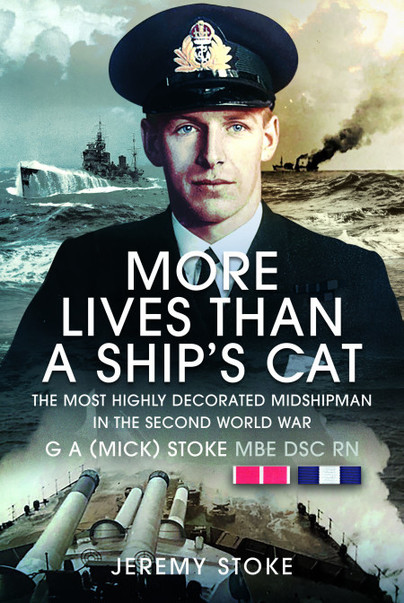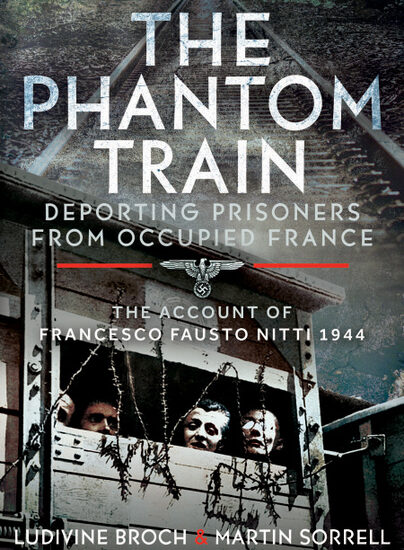The story behind the book
Author guest post from Jeremy Stoke.
In May 2020, I decided to open up some boxes of my father’s papers that my mother had kept safely for the previous seventy years. My father had died thirty years ago and the boxes had remained sealed until I opened them that sunny morning, unaware of what I might find.
Remarkably, the first brown foolscap file I pulled out, contained some letters in my father’s handwriting to his parents, dating from January 1940 when he had started at the Royal Naval College, Dartmouth. He had entered through the Civil Service Commission Exams as a Special Entry cadet in November 1939. Only 99 out of 500 applicants were accepted and he was the 19th out of 19 accepted into the Paymaster Branch. This was the Accounting and Support branch covering cyphering and de-cyphering of signals, victualling, accounting, stores, pay, legal and secretarial services to the ship’s captain.
I began reading the letters, but found there were too many to read! Nearly 170 when I finally finished counting, covering the period up to September 1945. All of them had been carefully preserved by his parents and thoughtfully he had numbered them. The letters had to return to England by ship, some of which were torpedoed, so the letters with the missing numbers were ‘missing presumed drowned’!
The next brown folders included many Operational Orders, marked ‘Confidential – to be destroyed by fire when complied with’. As secretary to a number of captains, he looked after all documents and paperwork. Also included were many ‘Letters of Proceedings’, written by the captain after a particular operation or engagement. Most interesting were those written after each of the four Malta Convoys that his ship, HMS Carlisle, undertook in early 1942; some of the most fiercely fought without any Allied air cover and many ‘near misses’.
Another box included numerous newspapers and periodicals, all of which had articles written about particular operations he had been involved with. Some printed in London like the ‘Illustrated London News’, some printed locally in Egypt where he was stationed in Alexandria such as the ‘Egyptian Mail’, the ‘Parade’ and the ‘Malta Times’.
Each naval officer when leaving a ship, or when his captain transfers to another ship, receives a single page document (a good conduct certificate) signed by the captain confirming the officer served ‘to his satisfaction’. Quite often the captain would add additional comments in his own handwriting. As the paper was very thin, they were referred to as ‘flimsies’. Opening another file, I found a number of these paper-clipped together.

I stopped reading the letters, and put the ‘flimsies’ in date order. Amazingly, the set was complete from 1st May 1940, when he joined HMS Glasgow as a cadet, through to June 1947 when he was invalided out of the Royal Navy due to damage to his legs from the incessant bombing at the Siege of Tobruk in 1941 and in the port of Bone, Algeria during Operation Torch in late 1942.
I found all his Certificates and Letters of Appointment from Cadet to Midshipman to Lieutenant. At the bottom of the box were all his School Reports, his Special Entry Exam Results (together with all the other candidates!), and his First achieved on passing out of Dartmouth after just eight weeks training which in peace time would have taken eight months.

The family were already aware he was the most decorated midshipman in the Royal Navy during the Second World War from his obituary printed in the Daily Telegraph when he died in 1991. He was Mentioned in Despatches and awarded the DSC (Distinguished Service Cross) at the age of nineteen, both of which were announced in the London Gazette and in letters from King George VI.
During the second half of 2020, I set out to find the original documents his captain would have written, recommending these awards and found them after much searching in The National Archives at Kew.


I now began to realise that his story was quite remarkable for one so young and who served in so many different naval engagements throughout the war and survived!! Torpedoed three times in the Mediterranean; continually bombed in Tobruk; bombed day and night in Bone, Algeria during Operation Torch, where he was awarded the MBE; torpedoed on HMS Hardy escorting Russian Convoy JW56A and B; on HMS Kempenfelt, 26th Destroyer Flotilla leader, the closest inshore, just one mile off Juno beach at D-Day; and finally on the escort aircraft carrier HMS Rajah in the Pacific, supporting the US Navy between San Diego, Pearl Harbour and Guam.
It was clear that G.A. (Mick) Stoke MBE, DSC RN had ‘More Lives Than A Ship’s Cat’ and was recognized by the Admiralty on a number of occasions at the young age of just nineteen, becoming ‘The Most Decorated Midshipman in the Royal Navy in the Second World War’.
The manuscript was completed within a year and since the autumn of 2021, the specialist publishers, Pen & Sword, have provided fantastic editorial support to a rookie author! The book has been published in May 2022 on time, in less than two years from opening those first boxes and in the 100th anniversary year of my father’s birth.
Jeremy Stoke
4th May 2022
For more information go to our website and visit us on Facebook.


